

The Guennol Collection: Cabinet of Wonders, February 25, 2000 through May 07, 2000 (Image: PHO_E2000i001.jpg Brooklyn Museum photograph, 2000)

The Guennol Collection: Cabinet of Wonders, February 25, 2000 through May 07, 2000 (Image: PHO_E2000i002.jpg Brooklyn Museum photograph, 2000)

The Guennol Collection: Cabinet of Wonders, February 25, 2000 through May 07, 2000 (Image: PHO_E2000i003.jpg Brooklyn Museum photograph, 2000)

The Guennol Collection: Cabinet of Wonders, February 25, 2000 through May 07, 2000 (Image: PHO_E2000i004.jpg Brooklyn Museum photograph, 2000)

The Guennol Collection: Cabinet of Wonders, February 25, 2000 through May 07, 2000 (Image: PHO_E2000i005.jpg Brooklyn Museum photograph, 2000)

The Guennol Collection: Cabinet of Wonders, February 25, 2000 through May 07, 2000 (Image: PHO_E2000i006.jpg Brooklyn Museum photograph, 2000)

The Guennol Collection: Cabinet of Wonders, February 25, 2000 through May 07, 2000 (Image: PHO_E2000i007.jpg Brooklyn Museum photograph, 2000)
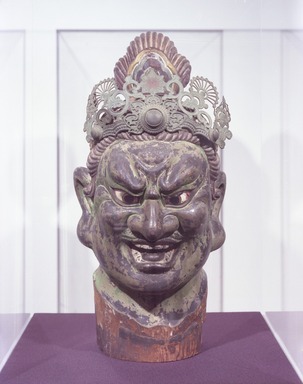
The Guennol Collection: Cabinet of Wonders, February 25, 2000 through May 07, 2000 (Image: PHO_E2000i008.jpg Brooklyn Museum photograph, 2000)
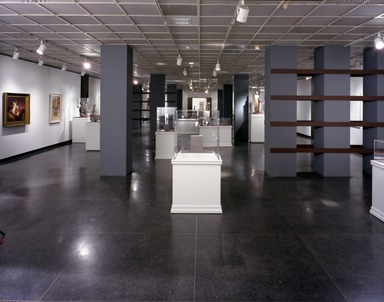
The Guennol Collection: Cabinet of Wonders, February 25, 2000 through May 07, 2000 (Image: PHO_E2000i009.jpg Brooklyn Museum photograph, 2000)
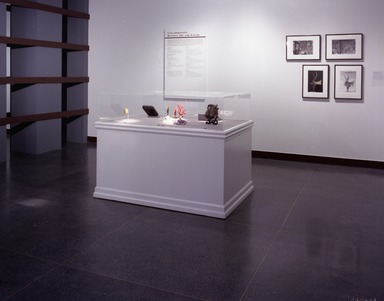
The Guennol Collection: Cabinet of Wonders, February 25, 2000 through May 07, 2000 (Image: PHO_E2000i010.jpg Brooklyn Museum photograph, 2000)

The Guennol Collection: Cabinet of Wonders, February 25, 2000 through May 07, 2000 (Image: PHO_E2000i011.jpg Brooklyn Museum photograph, 2000)

The Guennol Collection: Cabinet of Wonders, February 25, 2000 through May 07, 2000 (Image: PHO_E2000i012.jpg Brooklyn Museum photograph, 2000)

The Guennol Collection: Cabinet of Wonders, February 25, 2000 through May 07, 2000 (Image: PHO_E2000i013.jpg Brooklyn Museum photograph, 2000)

The Guennol Collection: Cabinet of Wonders, February 25, 2000 through May 07, 2000 (Image: PHO_E2000i014.jpg Brooklyn Museum photograph, 2000)

The Guennol Collection: Cabinet of Wonders, February 25, 2000 through May 07, 2000 (Image: PHO_E2000i015.jpg Brooklyn Museum photograph, 2000)

The Guennol Collection: Cabinet of Wonders, February 25, 2000 through May 07, 2000 (Image: PHO_E2000i016.jpg Brooklyn Museum photograph, 2000)
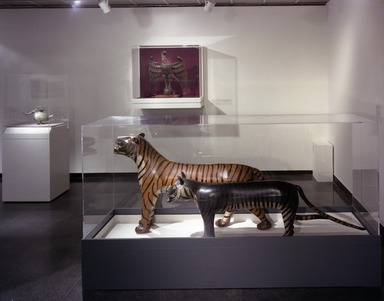
The Guennol Collection: Cabinet of Wonders, February 25, 2000 through May 07, 2000 (Image: PHO_E2000i017.jpg Brooklyn Museum photograph, 2000)

The Guennol Collection: Cabinet of Wonders, February 25, 2000 through May 07, 2000 (Image: PHO_E2000i018.jpg Brooklyn Museum photograph, 2000)

The Guennol Collection: Cabinet of Wonders, February 25, 2000 through May 07, 2000 (Image: PHO_E2000i019.jpg Brooklyn Museum photograph, 2000)

The Guennol Collection: Cabinet of Wonders, February 25, 2000 through May 07, 2000 (Image: PHO_E2000i020.jpg Brooklyn Museum photograph, 2000)

The Guennol Collection: Cabinet of Wonders, February 25, 2000 through May 07, 2000 (Image: PHO_E2000i021.jpg Brooklyn Museum photograph, 2000)

The Guennol Collection: Cabinet of Wonders, February 25, 2000 through May 07, 2000 (Image: PHO_E2000i022.jpg Brooklyn Museum photograph, 2000)
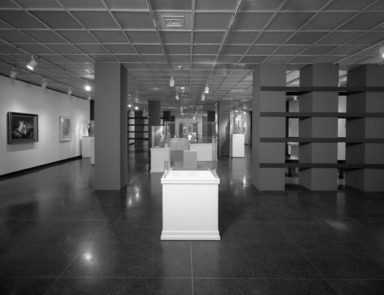
The Guennol Collection: Cabinet of Wonders, February 25, 2000 through May 07, 2000 (Image: PHO_E2000i023.jpg Brooklyn Museum photograph, 2000)

The Guennol Collection: Cabinet of Wonders, February 25, 2000 through May 07, 2000 (Image: PHO_E2000i024.jpg Brooklyn Museum photograph, 2000)

The Guennol Collection: Cabinet of Wonders, February 25, 2000 through May 07, 2000 (Image: PHO_E2000i025.jpg Brooklyn Museum photograph, 2000)

The Guennol Collection: Cabinet of Wonders, February 25, 2000 through May 07, 2000 (Image: PHO_E2000i026.jpg Brooklyn Museum photograph, 2000)

The Guennol Collection: Cabinet of Wonders, February 25, 2000 through May 07, 2000 (Image: PHO_E2000i027.jpg Brooklyn Museum photograph, 2000)

The Guennol Collection: Cabinet of Wonders, February 25, 2000 through May 07, 2000 (Image: PHO_E2000i028.jpg Brooklyn Museum photograph, 2000)

The Guennol Collection: Cabinet of Wonders, February 25, 2000 through May 07, 2000 (Image: PHO_E2000i029.jpg Brooklyn Museum photograph, 2000)

The Guennol Collection: Cabinet of Wonders, February 25, 2000 through May 07, 2000 (Image: PHO_E2000i030.jpg Brooklyn Museum photograph, 2000)

The Guennol Collection: Cabinet of Wonders, February 25, 2000 through May 07, 2000 (Image: PHO_E2000i031.jpg Brooklyn Museum photograph, 2000)

The Guennol Collection: Cabinet of Wonders, February 25, 2000 through May 07, 2000 (Image: PHO_E2000i032.jpg Brooklyn Museum photograph, 2000)

The Guennol Collection: Cabinet of Wonders, February 25, 2000 through May 07, 2000 (Image: PHO_E2000i033.jpg Brooklyn Museum photograph, 2000)

The Guennol Collection: Cabinet of Wonders, February 25, 2000 through May 07, 2000 (Image: PHO_E2000i034.jpg Brooklyn Museum photograph, 2000)

The Guennol Collection: Cabinet of Wonders, February 25, 2000 through May 07, 2000 (Image: PHO_E2000i035.jpg Brooklyn Museum photograph, 2000)

The Guennol Collection: Cabinet of Wonders, February 25, 2000 through May 07, 2000 (Image: PHO_E2000i036.jpg Brooklyn Museum photograph, 2000)
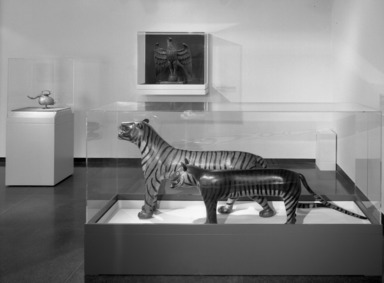
The Guennol Collection: Cabinet of Wonders, February 25, 2000 through May 07, 2000 (Image: PHO_E2000i037.jpg Brooklyn Museum photograph, 2000)

The Guennol Collection: Cabinet of Wonders, February 25, 2000 through May 07, 2000 (Image: PHO_E2000i038.jpg Brooklyn Museum photograph, 2000)

The Guennol Collection: Cabinet of Wonders, February 25, 2000 through May 07, 2000 (Image: PHO_E2000i039.jpg Brooklyn Museum photograph, 2000)

The Guennol Collection: Cabinet of Wonders, February 25, 2000 through May 07, 2000 (Image: PHO_E2000i040.jpg Brooklyn Museum photograph, 2000)

The Guennol Collection: Cabinet of Wonders, February 25, 2000 through May 07, 2000 (Image: PHO_E2000i041.jpg Brooklyn Museum photograph, 2000)

The Guennol Collection: Cabinet of Wonders, February 25, 2000 through May 07, 2000 (Image: PHO_E2000i042.jpg Brooklyn Museum photograph, 2000)
The Guennol Collection: Cabinet of Wonders
-
January 1, 2000
The Guennol Collection: Cabinet of Wonders celebrates the wide-ranging vision of Alastair Bradley Martin and his wife, Edith Park Martin, whose gifts and loans to the Brooklyn Museum of Art have greatly enriched the Museum’s collections and installations. Peerless pre-Col[u]mbian and Asian jade carvings, ancient Egyptian sculptures, American folk art, and exceptional works by Albert Pinkham Ryder and Joseph Cornell are all found within the Martins’ remarkable collection. In addition to paintings, sculptures, and drawings, this exhibition of more than 100 works of art will include textiles and objects made of stone, feathers, gold, bronze, and wood. The exhibition will run from February 25 through May 7, 2000.
The Martins named the collection Guennol, the Welsh word for “marten” (a small mammal), because they spent part of their honeymoon in Wales. From the late 1940s, when they first began to collect, they offered Guennol objects as long-term loans and gifts to various public museums, including the BMA, where Mr. Martin has been a trustee since 1948 and served as Chair of the Board of Trustees from 1984 to 1989. In fields as diverse as Egyptian art and American folk art, African and Asian art, and pre-Columbian and contemporary art, visitors to the BMA see the Guennol credit line, indicating either a gift or a loan, on some of the most visually compelling and expressive works in the Museum.
The exhibition brings together, for the first time, long-term Guennol loans to the Museum, over forty works that the Martins have given to the BMA[,] and objects from the Martin family collections in order to examine the logic and aesthetic of the collection as a whole, and to address issues of connoisseurship. The closest parallel to the range of the Guennol Collection is the European Wunderkammer, or wonder cabinet, a type of collection that flourished in educated circles in Europe in the late sixteenth and seventeenth centuries. These princely and scholarly collections included artistic and natural “wonders” or “marvels,” terms that were widely applied to anything out of the ordinary. Displaying the Guennol Collection as a distinctly American version of the European wonder cabinet, the exhibition will present the works outside their art-historical classifications, emphasizing the creativity and independence of the Martins as collectors and providing a new interpretive context for understanding some of the Museum’s most familiar masterpieces.
Since 1975, three volumes on the Guennol Collection, both at the BMA and at other museums, have been published, each focusing on different objects from the collection. Many works are widely known from exhibitions and scholarly publications. Recent exhibitions that have contained Guennol objects include Facing History: The Black Image in American Art 1710–1940 organized in 1990 by the Corcoran Gallery of Art in Washington, D.C.; the Metropolitan Museum of Art’s 1992 exhibition The Royal City of Susa; The Olmec Art of Ancient Mexico, organized by the National Gallery in 1996; and Crosscurrents: Masterpieces of East Asian Art in New York Private Collections, at the Japan Society and A Seal Upon Thine Heart at the Morgan Library, both in 1998.
Highlights of the exhibition include a leonine goddess from Southwestern Iran, circa 3100–2900 B.C., just over three inches long and remarkable for its muscular, anthropomorphic physique; a naturalistic terra-cotta head from Ife, Nigeria, that features a classical form and delicate stratification, perhaps representing an obsolete scarification pattern; an Olmec jade figurine, circa 800–500 B.C., unusual for both its large size (8 1/2 inches) and for the smaller figure in its arms; a fragment of the Choju-giga, a Japanese scroll dating from the twelfth century, which depicts a lively race between a monkey and a rabbit and is considered an important example of early political satire; and a detailed nineteenth-century Noah’s Ark toy that features tiny carved animals and has long been on display in the BMA’s period rooms, which will be included among many other animal subjects. A 1931 American folk art carving of a pair of tigers, a Beatrix Potter (1866–1943) watercolor of a guinea pig mother and child, a Babylonian sculpture of a recumbent dog (circa 1800 B.C.), and a stone frog carved by the Zuni artist Leekya Duyuse (1889–1966) are other works featuring animals that will also be included. Paintings and sculptures include Willem de Kooning’s (1904–1997) Woman, Joseph Cornell’s (1903–1972) Starfish, and Albert Pinkham Ryder’s (1847–1917) The Lovers’ Boat.
The Guennol Collection: Cabinet of Wonders has been organized by Brooklyn Museum of Art Curators Diana Fane, Chair of the Department of the Arts of Africa, the Pacific, and the Americas, and Amy G. Poster, Chair of the Department of Asian Art. A catalogue of the exhibition will be published by the Brooklyn Museum of Art. Unlike the first three published volumes on Guennol, the catalogue is intended to be a visual essay that mirrors the structure of the exhibition, featuring essays by both curators and seventy color plates.
Brooklyn Museum Archives. Records of the Department of Public Information. Press releases, 1995 - 2003. 2000, 003-5.
View Original





















